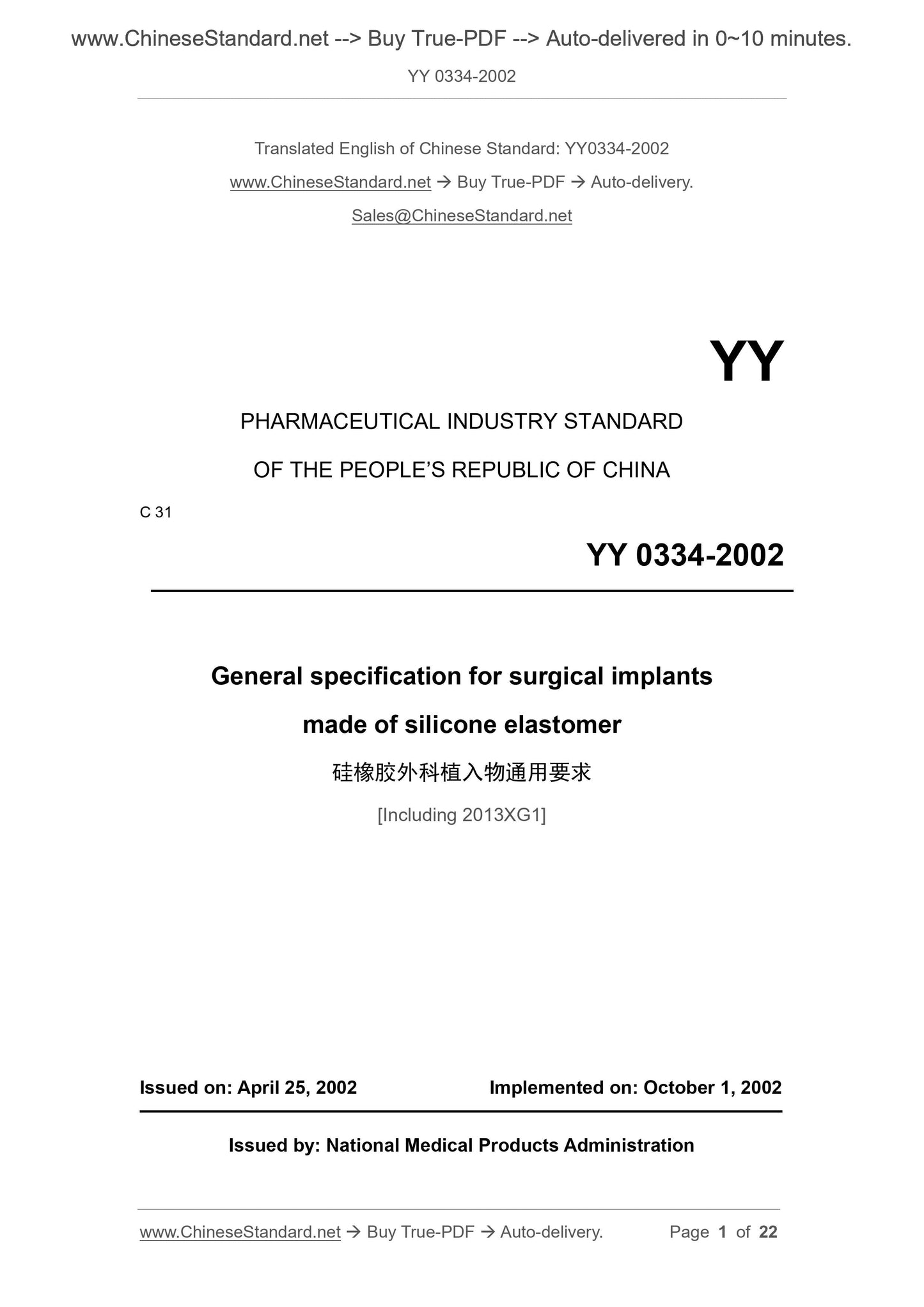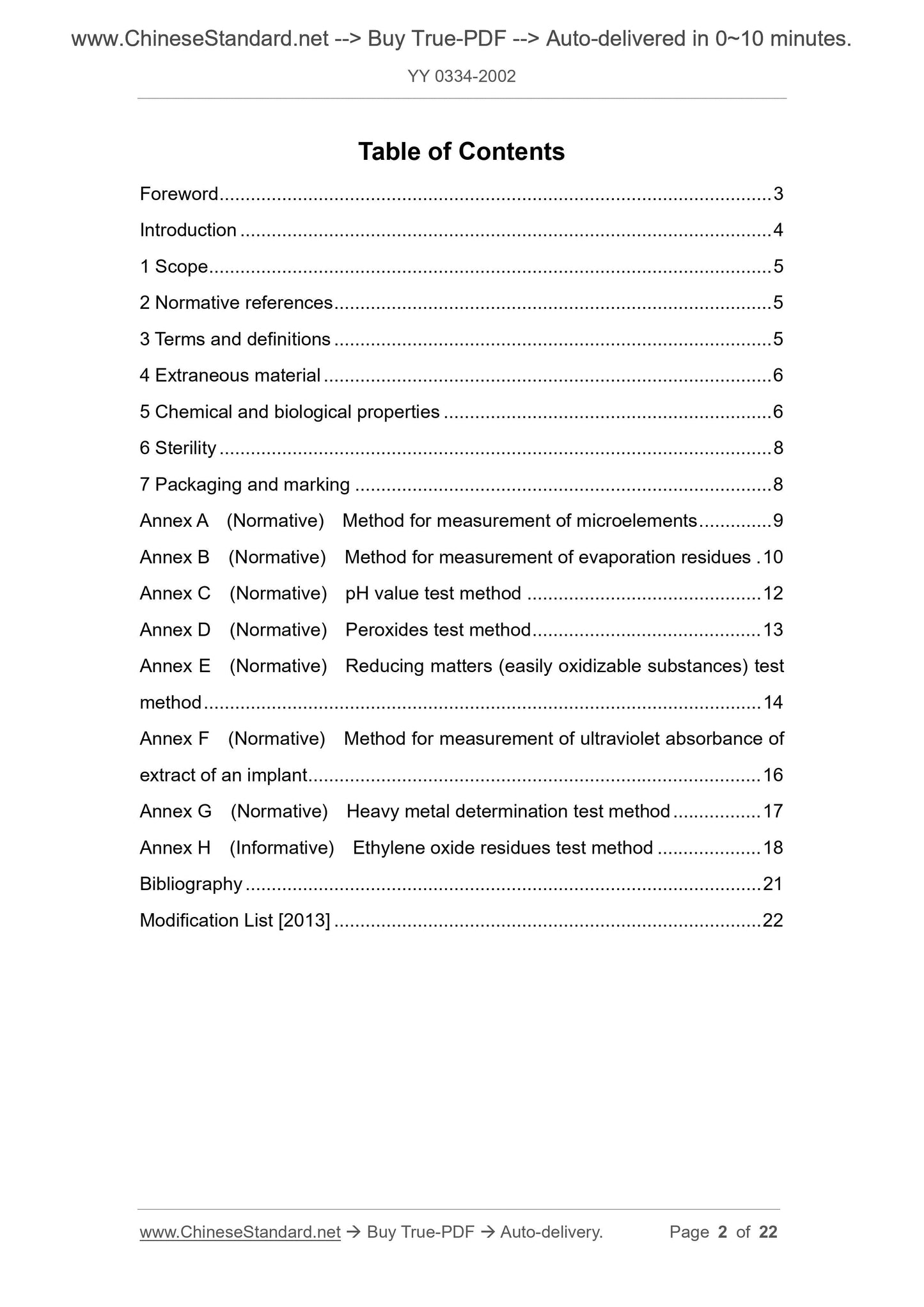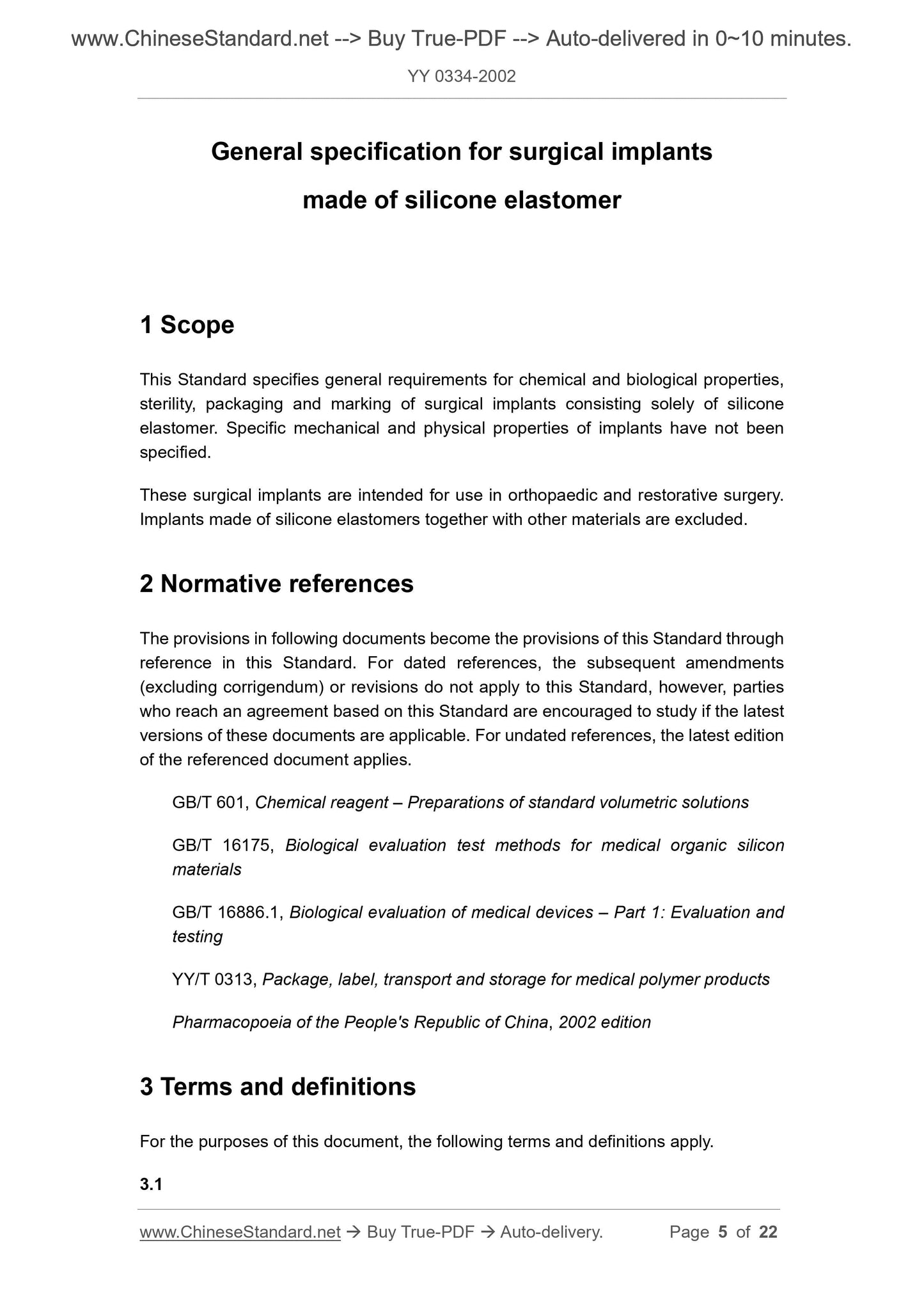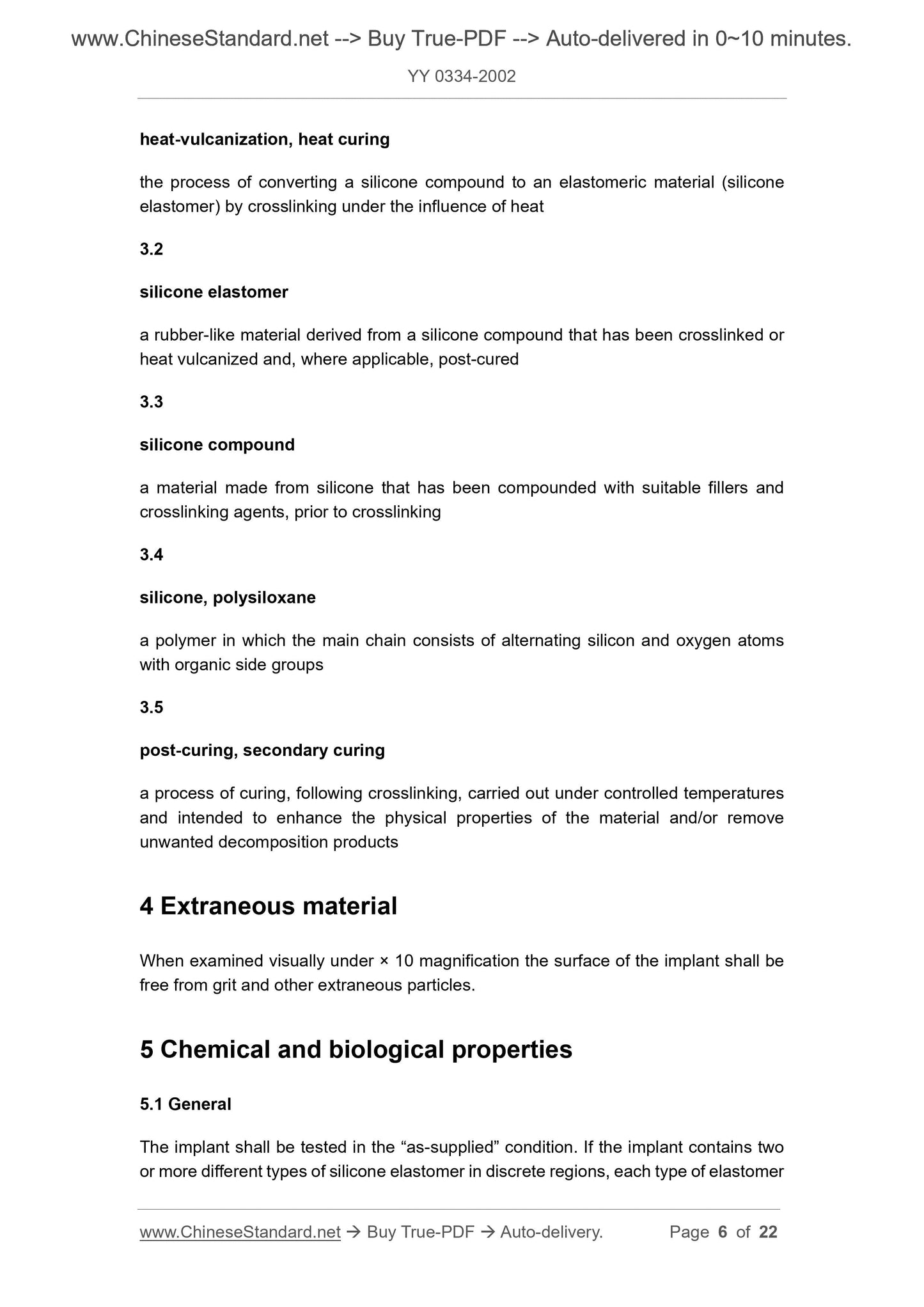1
/
of
4
PayPal, credit cards. Download editable-PDF and invoice in 1 second!
YY 0334-2002 English PDF
YY 0334-2002 English PDF
Regular price
$180.00
Regular price
Sale price
$180.00
Unit price
/
per
Shipping calculated at checkout.
Couldn't load pickup availability
YY 0334-2002: [Including 2013XG] General specification for surgical implants made of silicone elastomer
Delivery: 9 seconds. Download (and Email) true-PDF + Invoice.Get Quotation: Click YY 0334-2002 (Self-service in 1-minute)
Newer / historical versions: YY 0334-2002
Preview True-PDF
Scope
This Standard specifies general requirements for chemical and biological properties,sterility, packaging and marking of surgical implants consisting solely of silicone
elastomer. Specific mechanical and physical properties of implants have not been
specified.
These surgical implants are intended for use in orthopaedic and restorative surgery.
Implants made of silicone elastomers together with other materials are excluded.
Basic Data
| Standard ID | YY 0334-2002 (YY0334-2002) |
| Description (Translated English) | [Including 2013XG] General specification for surgical implants made of silicone elastomer |
| Sector / Industry | Medical Device and Pharmaceutical Industry Standard |
| Classification of Chinese Standard | C31 |
| Word Count Estimation | 15,147 |
| Date of Issue | 2002-04-25 |
| Date of Implementation | 2002-10-01 |
| Adopted Standard | BS 7253-3-1990, MOD |
| Issuing agency(ies) | State Drug Administration |
| Summary | This standard specifies the silicone rubber surgical implants chemical and biological properties, sterile, packaging and identification of common requirements. Unspecified physical and mechanical properties of the implant specific indicators. These implants are mainly used in orthopedic surgery and repair. Silicone rubber and other materials together with surgical implants are not included in the scope of this standard. |
Share







